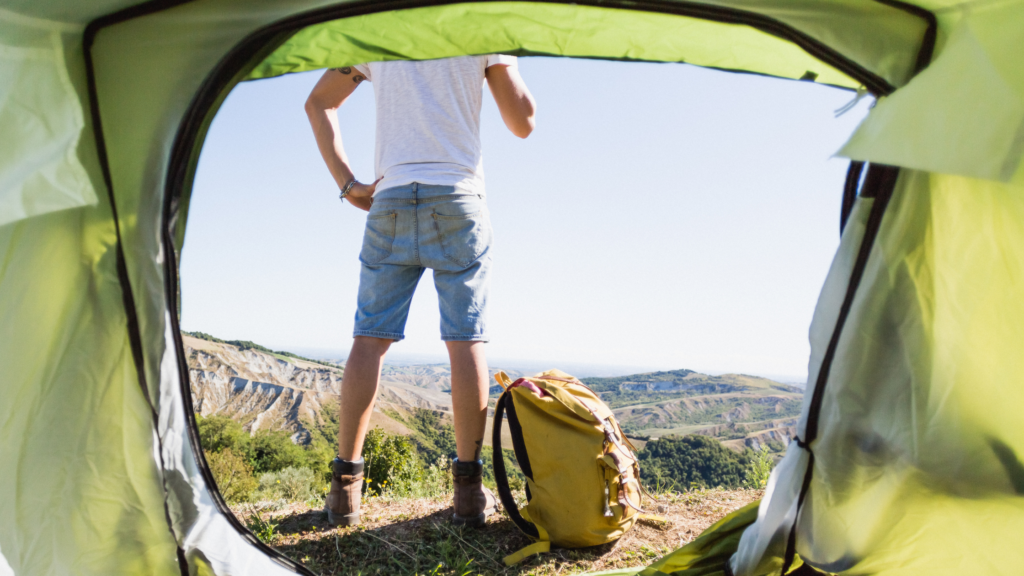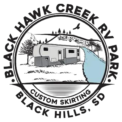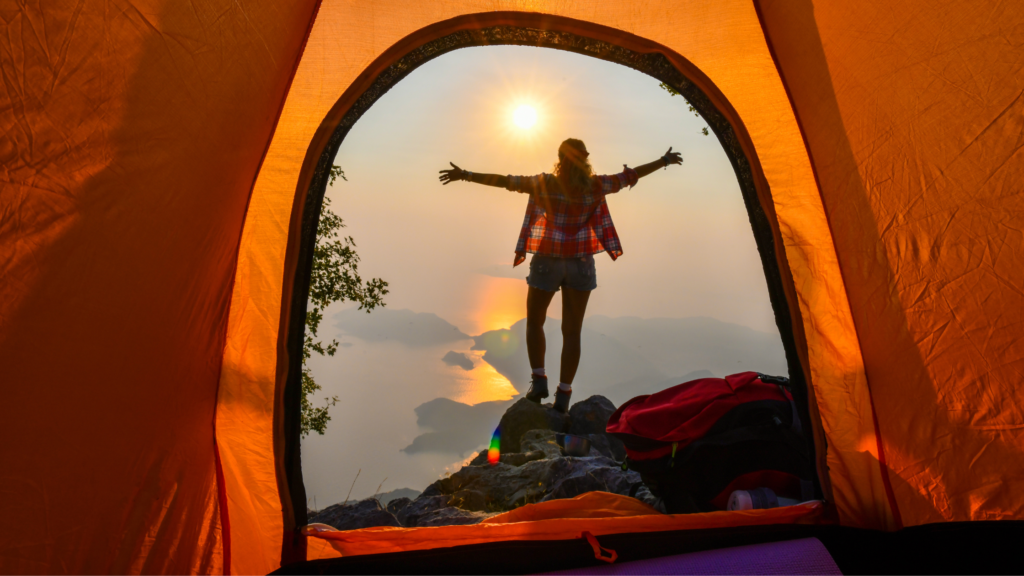Table of contents
Are you craving an adventure off the beaten path, a journey where solitude and self-discovery intertwine beneath the open sky? Solo camping might just be the perfect escapade for you. In this comprehensive guide, we’ll delve into the wonders of solo camping, from its myriad benefits to essential tips and a handy checklist to ensure your safety and comfort. Solo camping, or camping alone, offers a unique opportunity to reconnect with nature, rejuvenate your spirit, and forge a deeper sense of self-reliance. Whether you’re pitching a tent beneath towering pines or parking your RV amidst rolling hills, the solitude of solo camping provides a canvas for introspection and adventure alike.
Benefits of Solo Camping
Solo camping offers a myriad of benefits that cater to both the body and the mind. Here are some compelling reasons why you should consider embarking on a solo camping adventure:
- Personal Growth and Reflection: Solo camping provides ample opportunity for introspection and self-discovery. Removed from the distractions of daily life, you can reconnect with yourself and gain a deeper understanding of your thoughts, emotions, and aspirations.
- Independence and Self-Reliance: Camping alone requires you to rely solely on yourself, fostering a sense of independence and self-reliance. From pitching your tent to navigating the wilderness, solo camping empowers you to tackle challenges with confidence and resourcefulness.
- Unparalleled Solitude: In a world filled with constant noise and stimulation, solo camping offers a rare opportunity for solitude and tranquility. Whether you’re gazing at the stars or listening to the gentle rustle of leaves, the peace and quiet of the wilderness can be incredibly rejuvenating.
- Freedom and Flexibility: When you’re camping alone, you have the freedom to chart your own course and set your own pace. Whether you want to explore new trails, linger by a tranquil stream, or simply soak in the beauty of nature, solo camping allows you to follow your whims and embrace spontaneity.
- Connection with Nature: Solo camping immerses you in the natural world, allowing you to forge a deeper connection with the environment around you. From marveling at majestic landscapes to observing wildlife in its natural habitat, camping alone offers countless opportunities to appreciate the beauty and wonder of nature.
- Stress Relief and Relaxation: The simple act of spending time outdoors has been shown to reduce stress and promote relaxation. Whether you’re unwinding by a crackling campfire or taking a leisurely hike through the woods, solo camping provides a welcome escape from the pressures of everyday life, just make sure you have a trusty solo camping checklist for safety.

7 Tips for Solo Camping Beginners
If you’re new to solo camping, fear not! With the right preparation and mindset, your solo camping adventure can be both safe and rewarding. Here are some essential tips for beginners:
1. Plan Ahead
Research your destination thoroughly and familiarize yourself with local regulations and camping guidelines. Some areas may require permits or reservations for camping, so be sure to obtain any necessary permits well in advance of your trip, visit this site for more information on camping permits.
2. Start Small
For your first solo camping adventure, consider choosing a campground or backcountry area that is relatively close to home. Starting small will allow you to gain confidence and experience before venturing into more remote or challenging terrain.
3. Pack Wisely
Create a comprehensive camping checklist and pack all necessary gear and supplies. Essentials include shelter (tent or RV), sleeping bag and sleeping pad, food and cooking supplies, water and water purification system, clothing for varying weather conditions, navigation tools (map, compass, GPS), first aid kit, and emergency supplies.
4. Inform Others
Before you depart, be sure to share your itinerary and expected return date with a trusted friend or family member. Provide details about your planned route and campsite location, and check in periodically to let them know you’re safe.
5. Practice Safety
Prioritize your safety at all times while camping alone. Choose a well-lit and easily accessible campsite, and familiarize yourself with basic safety procedures such as fire safety, wildlife awareness, and emergency protocols.
6. Respect the Environment
Practice Leave No Trace principles and minimize your impact on the environment. Pack out all trash, avoid disturbing wildlife, and follow established trails and campsites to preserve the natural beauty of the wilderness.
7. Connect with Fellow Campers
While solo camping offers solitude and introspection, don’t be afraid to connect with other campers when you feel comfortable doing so. Sharing stories, tips, and experiences with fellow outdoor enthusiasts can enrich your camping experience and foster a sense of community.
If you’re a woman gearing up for a solo camping adventure, don’t miss our additional blogs on ‘Camping & RVing Essentials for Women‘ and ‘The Ultimate Guide to RV Camping Alone as a Woman’ for tailored tips and insights to enhance your outdoor experience.
Solo Camping Checklist
Before heading out on your solo camping adventure, it’s essential to pack all the necessary gear and supplies to ensure a safe and enjoyable experience. Use this comprehensive solo camping checklist for your safety and to make sure you have everything you need:
Shelter and Sleeping Gear:
- Tent, hammock, or RV (depending on your preference)
- Tent stakes and guylines
- Ground tarp or footprint
- Sleeping bag rated for the expected temperature
- Sleeping pad or air mattress for insulation and comfort
- Pillow or stuff sack filled with clothes for a makeshift pillow
Clothing and Personal Items:
- Insulating layers (fleece or down jacket)
- Waterproof and windproof outer shell (jacket and pants)
- Sturdy hiking boots or shoes
- Hat, gloves, and scarf for cold weather
- Sunglasses and sunscreen
- Insect repellent
- Personal hygiene items (toothbrush, toothpaste, biodegradable soap, etc.)
- Prescription medications and any necessary medical supplies
Food and Cooking Supplies:
- Portable camping stove or backpacking stove
- Fuel for stove (propane, white gas, or isobutane canisters)
- Lighter or waterproof matches
- Cooking pots and pans
- Utensils (spatula, spoon, knife, etc.)
- Plates, bowls, and cups
- Biodegradable soap and sponge for cleaning dishes
- Cooler and ice packs (if bringing perishable food)
- Non-perishable food items (canned goods, dried fruits, nuts, granola bars, etc.)
- Water bottles or hydration reservoirs
Water and Hydration:
- Sufficient water supply for drinking, cooking, and cleaning
- Water filtration system or purification tablets
- Collapsible water container for transporting water from a water source to your campsite
Navigation and Safety Gear:
- Map of the area and compass
- GPS device or smartphone with GPS capabilities
- Whistle or signaling device
- Multi-tool or knife
- First aid kit with essential supplies (bandages, antiseptic wipes, pain relievers, etc.)
- Personal locator beacon or satellite messenger device (optional but recommended for remote areas)
Lighting and Illumination:
- Headlamp or flashlight with extra batteries
- Lantern or campfire for ambient lighting around the campsite
Miscellaneous Gear:
- Backpack or daypack for hiking excursions
- Podcasts for long road trips
- Camp chairs or portable seating
- Repair kit for tent, sleeping pad, and other gear
- Entertainment items (book, journal, playing cards, etc.)
- Trash bags for packing out waste and keeping your campsite clean
- Ziplock bags or dry sacks for organizing and waterproofing items
- Duct tape for quick repairs and improvised solutions

Where to Go Solo Camping
When it comes to solo camping, the possibilities are as vast as the great outdoors itself, there’s a solo camping or camping alone option to suit every taste and safety preference. Here are three popular options for solo camping, each offering its own unique benefits and downsides:
Backcountry & Primitive
For the adventurous soul craving true solitude and immersion in nature, backcountry and primitive camping are the ultimate escape. These remote wilderness areas offer unparalleled tranquility and serenity, allowing you to disconnect from the hustle and bustle of modern life and reconnect with the natural world. Benefits of backcountry and primitive camping include:
- Seclusion: Enjoy the peace and quiet of the wilderness with minimal human disturbance.
- Breathtaking Scenery: Immerse yourself in stunning landscapes and panoramic views.
- Unlimited Exploration: Embark on off-trail hikes and discover hidden gems off the beaten path.
However, backcountry and primitive camping also come with their own set of challenges and considerations, including:
- Lack of Amenities: Be prepared to rough it with no amenities such as restrooms, potable water, or designated campsites.
- Wildlife Encounters: Exercise caution and follow proper wildlife safety protocols when camping in remote areas.
- Navigational Skills: Strong navigational skills and wilderness survival knowledge are essential for safely navigating backcountry terrain.
Campgrounds
For solo campers seeking a balance of convenience and comfort, established campgrounds offer a range of amenities and facilities to enhance your camping experience, making them one of the most popular choices. From designated campsites to restrooms and potable water, campgrounds provide the perfect home base for outdoor adventures. Benefits of camping in established campgrounds include:
- Amenities: Enjoy access to amenities such as restrooms, potable water, picnic tables, and fire pits.
- Safety and Security: Campgrounds often have campground hosts or park rangers on-site, providing an added layer of safety and security.
- Community Atmosphere: Connect with fellow campers and enjoy the camaraderie of campground life.
However, camping in established campgrounds also has its drawbacks, including:
- Crowds and Noise: Campgrounds can sometimes be crowded, especially during peak seasons, leading to noise and reduced privacy.
- Reservations Required: Popular campgrounds may require advance reservations, limiting spontaneity and flexibility.
Glamping
For solo campers who crave the outdoor experience without sacrificing comfort and luxury, glamping offers the perfect solution. Glamping combines the best of camping and upscale accommodations, allowing you to enjoy the beauty of nature in style. Benefits of glamping include:
- Luxurious Accommodations: Stay in cozy cabins, safari tents, or yurts equipped with comfortable beds, plush linens, and other modern amenities.
- Scenic Locations: Glamping sites are often situated in picturesque settings, offering stunning views and access to outdoor activities.
- Convenience: Enjoy the convenience of pre-pitched tents or cabins, eliminating the need to set up camp upon arrival.
However, glamping may not be for everyone, and it comes with its own set of considerations, including:
- Cost: Glamping accommodations can be more expensive than traditional camping options, making it less accessible for budget-conscious travelers.
- Limited Immersion in Nature: While glamping allows you to enjoy the outdoors in comfort, it may lack the immersive experience of traditional camping.
- Availability: Glamping sites may be limited in some areas, especially in remote or less developed regions.
Discover Your Perfect Solo Camping Haven at Black Hawk Creek RV Park!
Are you a first-time solo RV camper seeking a safe and inviting RV park for your outdoor adventure? Look no further than Black Hawk Creek RV Park & Cabins! Located just 2 miles from the interstate and a short drive from Rapid City, our park is your year-round gateway to an unforgettable South Dakota experience.
With our strategic location, you’re never far from South Dakota’s most iconic attractions. Explore the majestic beauty of Mount Rushmore, pay homage to Crazy Horse, or immerse yourself in the natural wonders of Custer State Park and Badlands National Park. Embark on a scenic drive to Devil’s Tower or step back in time in the historic Wild West gambling town of Deadwood.
Book your stay at Black Hawk Creek RV Park today and unlock the door to a world of exploration, relaxation, and comfort in the heart of South Dakota. Your solo RV camping adventure awaits!

